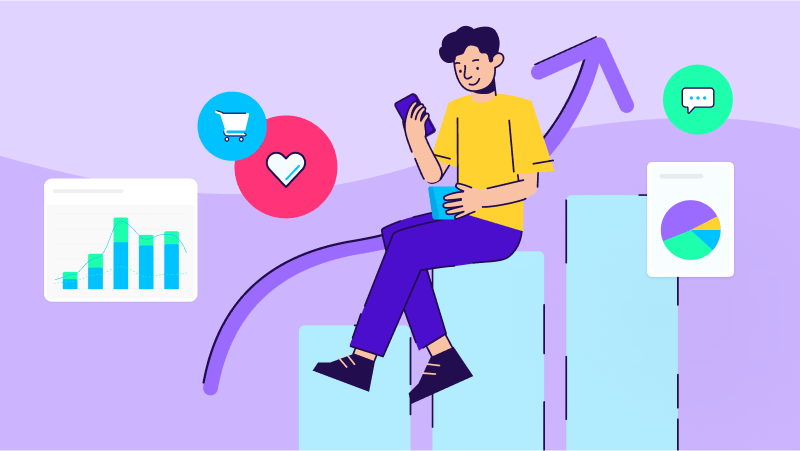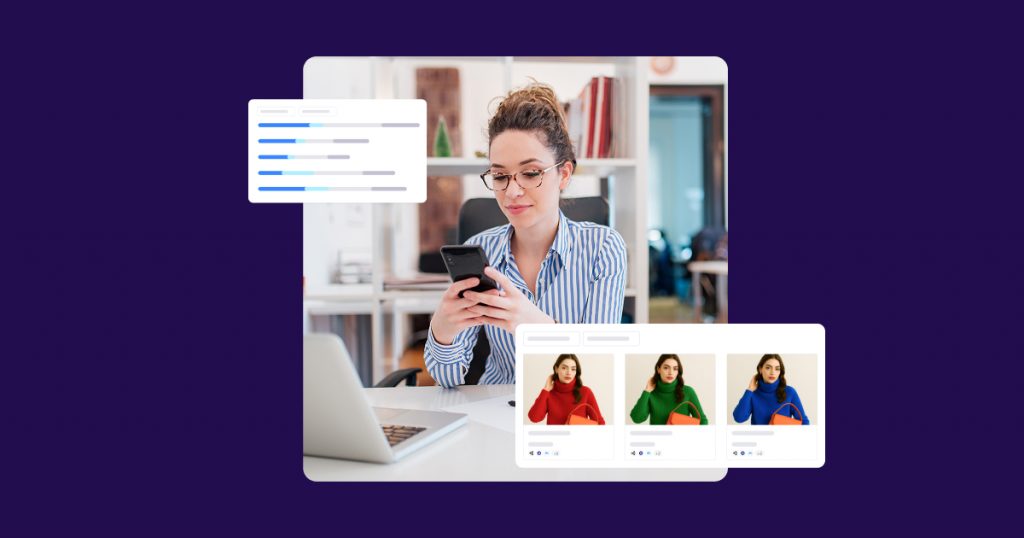
Introduction
Did you know that in 2021, user spending on subscription apps on the App Store reached over $6 billion in revenue, marking a 33% surge from 2020? At the same time, Google Play subscription app revenue climbed by a whopping 78% — surpassing $2.5 billion.
When it comes to subscription-based verticals — e.g. gaming, health & fitness, music and media streaming, dating etc. — convenience and personalization drive installs, engagement, and loyalty.
The pandemic-accelerated rise of mobile, coupled with more available options than ever before, demand from consumers with more mobile accessibility and expectations for top notch service on the go — have all driven subscription-based brands to emphasize mobile apps, which are particularly well-suited for consuming content on a regular basis.
This one-way digital train did not skip the realm of subscription-based apps, which have become a lot more personal and at user’s fingertips 24/7.
Fueled by the mobile revolution, apps in this diverse sector are setting the pace for effective data gathering and optimization. And, by giving users exactly what they want — a customized experience, anytime, anywhere — apps that offer subscriptions have driven remarkable growth over the past few years.
Recent data reflects just how dramatically the subscription-based vertical has grown: According to TechCrunch, the top 100 subscription-based apps saw their consumer spend increase 41% to $18.3 billion during 2021, up from $13 billion during 2020.
The same report states that US figures mirrored the global mobile subscription spending trend, when American consumers spent $8.5 billion in the top 100 subscription-based apps during 2021, a 44% jump from $5.9 billion in 2020.
Truth is, apps in a wide range of categories have adopted the subscription model.
Game subscriptions allow users to get coveted upgrades, exclusive content, in-game currency, community, and an ad-free experience, while other sectors offer anything from fitness workouts, to digital courses, and video streaming.
As an added incentive, subscription apps on the App Store receive a higher revenue share for subscription fees compared to non-subscription apps.
Interestingly enough, although the sheer scale of gaming apps represents the highest share in the subscription pie, it’s still much lower than the overall share of gaming apps in the app ecosystem.
Other verticals like health & fitness, photography, and entertainment, on the other hand, show an opposing trend with a significantly higher share than their piece in the overall app pie. These types of apps have embraced the subscription model because it’s built on establishing habits and patterns of behavior over long periods of time.
Top Challenges
While subscription-based apps excel at brand loyalty and sales, there are also multiple challenges to overcome. Here are the top 7 to consider:
1 – Securing loyalty to drive downloads and paid subscriptions
With so many subscription brands available across multiple devices and platforms, a user has hundreds of options per category to choose from, so creating clear differentiation in an increasingly crowded space is not easy.
2 – Securing commitment from users
Many apps are accustomed to sending push notifications on at least a weekly basis, but in this vertical it’s not a simple task to identify users who have the potential of being highly engaged — and then manage to retain them beyond the first few interactions.
3 – Converting freemium users to paid subscribers
The free trial user experience should be friction-free and engaging just as much as the onboarding experience itself.
4 – Personalizing content
Often based on patterns in users’ activity history, an app in this vertical is expected to make use of deep linking, push notifications, and personalized advertising to keep users engaged, and meet their expectations around a tailored app experience, while upholding the latest consumer privacy laws.
5 – First-time onboarding towards securing a free trial
Mobile marketers offering subscription-based content must capitalize on deep links to make sure new users reach personalized content by way of a friction-free path.
6 – Mobile measurement in the age of privacy
Over the past few years, privacy has taken center stage in mobile app marketing, and particularly for iOS (Android’s changes are at least two years away).
Apple’s introduction of the ATT prompt, which severely limited the usability of its unique identifier, the IDFA. As a result, user-level data has become much less readily available.
App owners can now turn to a host of new and not so new solutions to be able to regain granular, actionable insights. These include:
- SKAdNetwork – Apple’s deterministic aggregated attribution solution. Within this framework, SKAN conversion values allow marketers to to grade user value after the install.
- User-level deterministic attribution – ATT opt-in rates are higher than expected for many apps, which not only enables full data granularity for these users, but also the ability to segment towards the larger non-consenting audiences.
- Aggregated probabilistic modeling – a statistical technique that leverages machine learning to estimate campaign performance with a high level of accuracy.
- Predictive analytics – allows marketers to make data driven decisions about users’ future value with a high level of confidence, while relying on very limited data points early in the funnel.
- Top-down measurement – holistic methodologies such as Incrementality (identifying incremental revenue drivers in order to optimize budget allocation), and media mix modeling or MMM (measuring the impact of campaigns to help determine how various elements contribute to the bottom line).
- Data Clean Rooms – enabling privacy-compliant measurement and optimization in a highly secure, permission-only environment where advertisers can leverage user level data insights without access to user level data.
These privacy-centered changes have a direct effect on marketers’ ability to measure lifetime value (LTV), remarketing campaigns, and segment audiences. Luckily — innovation is continuing to lead the measurement front with confidence, as data shows it has been largely restored to pre-ATT levels.
7 – Offering top quality content
The ability to constantly create engaging content is nothing short of critical in the subscription ecosystem. Without this, this model loses its very reason for existence.
Running a subscription app is a whole different ball game
- 11% of apps that offer subscriptions are gaming apps, although their share in the overall app pie is much higher. Non-gaming apps show the reverse trend with a much higher share of subscriptions, especially among health & fitness, photography, and education apps.
- There’s a 13% YoY increase in the number of iOS app installs of entertainment streaming apps.
- Since the beginning of 2022, we’ve seen a x2 surge in the number of remarketing conversions on Android among entertainment streaming apps.
- 2.1% of users who install subscription apps (non-gaming) go on to subscribe within 30 days of installing the app. In contrast, gaming app users are currently converting at only 0.2%.
- 82% of revenue generated by subscription-based apps is driven by subscription revenue, whereas for gaming subscription-based apps, only 36% of revenue comes from subscriptions.
- There’s currently a 54% opt-in rate among users who saw the ATT prompt in gaming apps that offer subscriptions, while other subscription-based apps show greater variance (36% in Eastern Europe and 54% in Latin America).
The solution to all of the above: deep measurement as the foundation for… Everything
One golden truth of app marketing is that there are no strategies and processes without deep measurement and ongoing optimization. Not only of basic KPIs, but also granular metrics — which map every stage of the conversion funnel to inform both user acquisition and re-engagement strategies.
In turn, marketers are able to hone in on segments they’re looking for and uplift their overall marketing performance.
Moreover, with the subscription model, it’s critical that with every renewal period, the revenue is passed on to your attribution and measurement provider — so LTV can be measured accurately.
If you’re just getting started with mobile attribution and marketing analytics, we recommend reading this guide first.

Chapter 1
User acquisition – what to measure and set up
Before you even get started with setting up your user acquisition (UA) campaigns, you must first have a few capabilities in place to guide your setup in the right direction.
#1 – Event mapping
To begin discussing the importance of deep measurement for successful UA, let’s take a deeper look at what it actually means in practice.
The following chart explores some of the main metrics savvy app marketers measure to optimize their efforts and deliver the highest-value subscribers to their apps. You can see that the left column contains vertical-specific goals, while the right one contains the metrics through which these goals can be met.
Note that within our vertical, the KPIs typically drive toward first-time subscription, which might be particularly challenging to measure given the fact that users can activate a single subscription across multiple devices.
For example, a user might download and subscribe to your service through your app but consume all your content on their smart TV, so their interaction with your brand moves from its platform of origination to another — and stays there.
| Goal | KPIs |
| Installs-related Acquisition Cost | • Organic / Non-organic split • SKAdnetwork conversions / traditional iOS attribution split and total deduped count • Month over Month growth (non-organic) • CPI /CPA • ROI |
| Engagement-related Stickiness: Number of days a month a user opens the app Short-term loyalty (less important than long-term) Long-term loyalty (retention) | • DAU / MAU • Retention D1, D7, D30 • Week 8, week 12 retention rate and beyond • Uninstall rate day 7, day 30, day 60 • Content viewed: number / growth in events measured • Content viewed: number / growth (e.g. 10 completed levels) |
| Subscription-related Increase # of new subscribers Increase revenue | • # of subscribers • Revenue • Free trial to paid subscription count and conversion rate • Renewals (month over month or quarter over quarter) • Churn rate – Number of canceled subscriptions |
In-app events
Having a successful subscription-based app is not only about acquiring new users and getting them to subscribe. It’s about making sure they remain engaged over time, generating revenue with ongoing subscriptions (or ad revenue, as is the case with some apps) and drive the highest possible LTV.
To achieve that, you need to understand how these users interact with your app during every step of your funnel. In other words, you need to know what in-app events to measure.
The anonymous information contained within these events, from install to content view or even unsubscription, is the backbone of successful app marketing.
Here’s what anonymized data from these in-app events can help you do:
1 – Create laser sharp audience segmentation.
Combine specific measured actions to form highly effective audiences, then build segmented UA and remarketing campaigns to increase the likelihood of engaging a more valuable and active user base (read more here).
2 – Inform UA and re-engagement campaigns to meet specific business goals.
Measuring specific in-app events that align with your business goals will allow you to understand which channels and sources are more or less likely to drive the kind of traffic that will help you reach your goals.
For example, increasing the LTV of existing customers by measuring customer user ID — to be able to connect a single user’s actions.
3 – Understand funnel problem areas.
By focusing on particular touch points along your user journey, you will be able to pinpoint stages or actions where users become less engaged or drop off completely.
Use these insights to optimize your customer experience by generating personalized incentive promotions across owned or paid channels that encourage funnel progression (deep linking, for example, is a great way to streamline user experience).
4 – Utilize raw data to inform deep knowledge and competitive edge.
The deeper you measure, the more meaningful insights you will be able to uncover, which is why working with raw data is so important. You will inevitably discover user behaviors and trends that will inform other marketing activities and possibly give you a competitive edge.
For example, raw data analysis can tell you that users who installed from a particular social media or email campaign were more likely to install the app, subscribe, and view.
To make things even more specific, here are the in-app events marketers usually measure within the subscription-based vertical:
- Sign-Up / Login / Registration (in conjunction with subscription or trial subscription)
- Customer User ID
- Content search
- Content view
- Completed 1st, 2nd, 3rd workouts
- Connected a health device
- Free trial started
- Free trial completed
- Paid subscription
- Renew subscription
- Unsubscribe
Most popular in-app events & revenue SKAN conversion value models
Since post-install data is so crucial for subscription apps, marketers are challenged by the limitations of value schema mapping, which involves only 64 combinations from 6 bits to measure.
Our data suggests that most apps are defaulting to one of two schemes: in-app events or a combination of in-app events and revenue — particularly in gaming, lifestyle, and social.
Most advertisers are under-utilizing funnel configurations, which can be a more efficient way to allocate your bits.
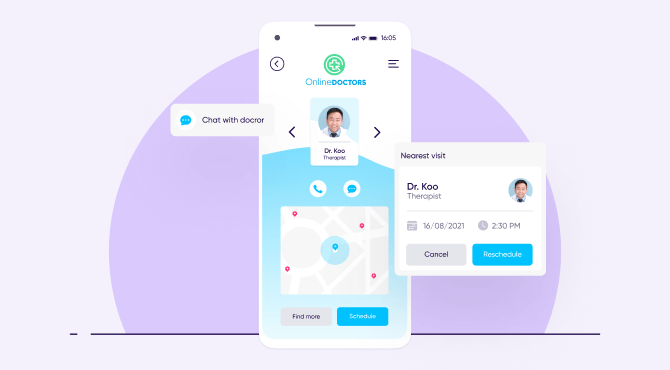
For more data trends and insights, visit our “state of app marketing for subscription apps” report – click here.
#2 – Setting up deep linking to ensure a flawless onboarding experience
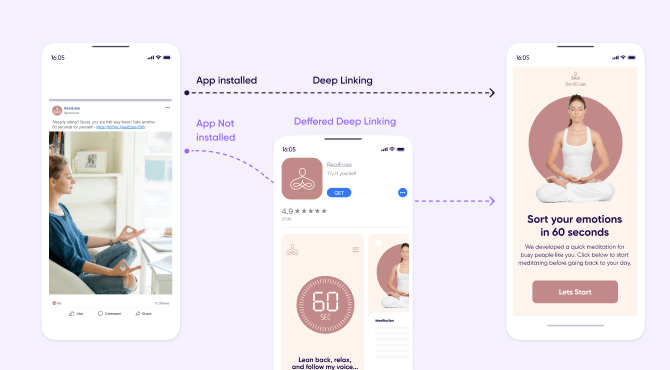
One of the most powerful tools in the app marketing tech stack is deep linking, which creates a contextually relevant user experience across channels, platforms, and devices.
How is this done in subscription-based apps?
Using the information contained in the deep link, users can be sent directly into a specific piece of content you’d like to promote.
For example, in a H&F app, a user could click on a call-to-action in an ad for soothing rainfall sounds, or in the case of a dating app — on an ad for an onboarding special. The user could then get immediately redirected to that in-app content, seamlessly moving from promotion, install, to landing page, creating a far greater likelihood of conversion.
Deep linking is picking up speed in the subscription-based vertical, and can be applied for both specific content pages (e.g. a specific article, course, or subscription type) and broader category pages (e.g. a recipe page in a weight loss app).
For more information on enhancing your customer experience using deep linking, read our Return of Experience (ROX) guide. Or, if you’re a developer looking to learn more about how to set up deep linking, visit our hands-on deep linking implementation guide.
Advanced deep linking strategy
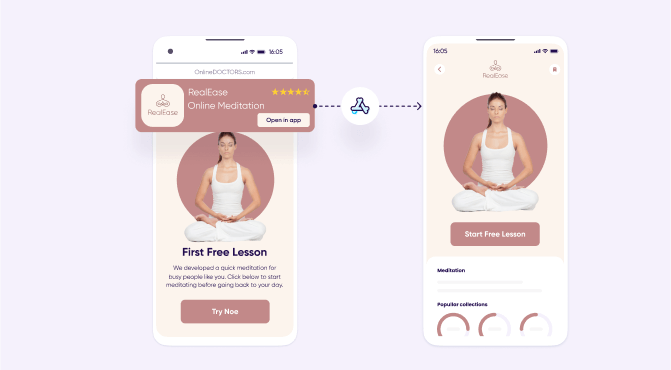
Subscription-based app marketers that know a thing or two about user engagement use deep links to bring users specifically from mobile web to their apps via an “open in app” call-to-action Smart Banner.
These call-to-actions often go hand-in-hand with campaigns offering promotions and deals for in-app users. For example, a 10% discount on the subscription price.
But why would marketers want to reroute users from web or desktop? Simply put, because the app offers the best user experience and therefore the highest conversion rates.
User invites
When you allow existing users to invite others to install your app, you create an additional way to drive installs, engagement, and revenue.
You can configure user invites and use deferred deep linking so that both the referee and the referrer get rewards, and then attribute the new installs you gain. This will provide you the granular data you need to support your UA strategy and optimization.
Push notifications
Push notifications are also in the toolbox of just about every savvy subscription-based app marketer. Push notifications can:
- Alert users on live events or new content
- Personalize messaging and segment users by using in-app event behavior
- Use data triggers to time your notifications
- Remind uses about in-app goals (e.g. Peloton offers “challenges” to complete)
There are, however, a few things you should keep in mind when using push notifications:
- Test them to help users expand beyond the types of content they typically consume to drive better retention.
- Show limited time offers to move free trial or freemium users to paying subscribers.
- Don’t overdo it. Just because you can send a push notification doesn’t mean you always should. Always ask yourself: am I offering actual value to my subscribers here? If the answer is no — stay clear from push notifications or you might risk annoying them away.
Uninstall measurement
It’s not enough to bring users smoothly to your app and personalize their experience within it to optimize conversion rates.
Marketers must also address the inevitable segment of users who will uninstall the app completely, and either build a strategy to bring those users back to active engagement or exclude these users altogether from any future engagement.
Bringing this rate down requires understanding why, when, and which users uninstall, especially given the rising scale of competition and higher user expectations.
So what are some of the things that can make users uninstall your subscription-based app?
1 – Poor in-app functionality and experience
Optimize your UA campaigns all you want, but if you don’t ensure a solid infrastructure to support your app’s functionality and a flawless plan to conversion — you’re essentially wasting your UA budget away.
2 – Excessive or impersonal onboarding process
Ensuring that your users move as quickly and smoothly as possible to active engagement — means building an onboarding process that is short, simple, and intuitive.
It should cover app basics, potentially offer incentives to encourage in-app engagement, and either a very quick login or a single sign-on option from Facebook, Google, etc.
3- Irrelevant or overwhelming notifications
While subscription-based apps may use push notifications to update users on new content, share general news, or simply bring inactive ones back, it is possible to overdo it.
Be intentional about sending only key notifications, at appropriate times, to users who display strong intent and relevant characteristics for each message.
Given that users can uninstall your app for a combination of many reasons, understanding your app’s uninstall rate is important. But what exactly are the benefits of uninstall measurement for marketers?
- Compare the overall quality of your media sources by exploring the performance and retention of users from different media sources, campaigns, single ads, countries, etc.
- Protecting user privacy by removing uninstalled users from remarketing segments and discontinuing re-engagement messaging.
Mapping a holistic customer journey
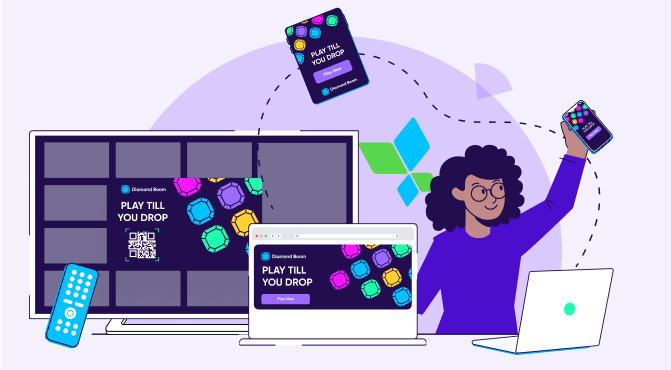
The reality is that even in 2022, there still is a noticeable divide between user behavior and marketing measurement.
Subscription-based apps’ end users have increasingly complex conversion journeys involving multiple devices — e.g. desktop web, mobile web, apps, and TVs — and QR codes, which have their own limitations.
Think, for a moment, about how a customer’s journey often starts on the web with a search — for example, “best dating app in the UK”. From there, a prospective user might visit a site, click on a web banner for your app, download and install it.
If you measure that sequence of events in silo, without measuring the user actions across different channels and devices, then your data remains disparate and will likely be analyzed by different teams.
If that’s the case, then each team’s goals, strategy, and subsequent action are formulated and executed in parallel but without ever being pieced together — to capture the full arc of your customer journey.
That’s why marketing efforts and measurement technology can, and should, be built and used around the needs of omni-channel customers.
The data capabilities of mobile, which has become the most easily measured ecosystem, allow marketers to bridge the gaps among touchpoints, and unite each user across platforms with a single customer user ID — as part of the overall brand.
Imagine that a user signs up on desktop and immediately gets a text message to their phone with a link to download the app. When measured the right way, the download and install events become part of the sign-up process, allowing you to follow the entire path from desktop to app.
That said, establishing and using a customer user ID is a particular challenge in the subscription-based vertical. That’s because you’re dealing with not just mobile devices, but smart TVs, requiring you to stitch the data from each device and platform together.
That complexity means that figuring out acquisition costs is all the more complicated, which makes accurate attribution data even more crucial.
For more information about holistic app measurement, read our complete guide – From mobile attribution to holistic people-based innovation.
Fraud protection

Fraud is a massive concern across all verticals. Increased fraud attention has led to much stronger protection measures, which in turn led fraudsters to up their game with increasingly more sophisticated fraud tactics.
This is especially evident in the use of advanced bots that aim to mimic user behavior in an attempt to bypass protection, and a similar trend can be seen from device farms: physical ones with thousands of actual devices on racks, and virtual ones with the use of emulated devices.
Given the continued resurgence of bots and increasingly more advanced fraud tactics, real-time protection should actively flag behavioral anomalies, subsequently unmasking new bot signatures and otherwise undetectable fraud behavioral patterns.
A good anti-fraud solution is therefore a blend of supervised and unsupervised machine learning driven by a large scale of data.
And since fraud is an ever-evolving threat, this means that not all of it can be identified in real time. New fraud patterns, model modifications, and variations constantly appear, as fraudsters try to gain the upper hand.
Post attribution fraud analysis is therefore necessary, as it provides a much needed retrospective look at installs that were attributed and were not identified as fraud in real time.
For more information about how AppsFlyer uses both machine learning and big data to combat fraud, read here.
Incrementality
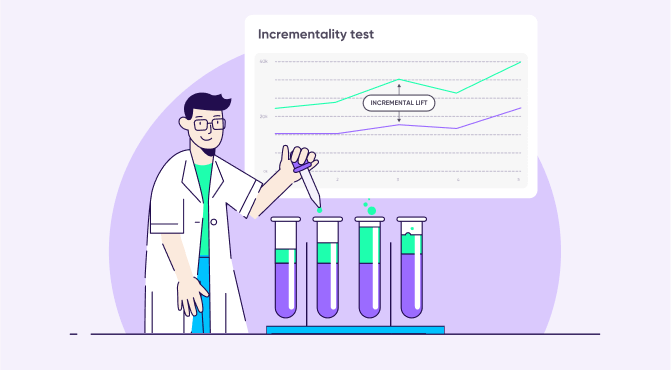
Incrementality gives you the necessary insights to determine the real value of your marketing efforts. This is done by measuring which conversions were the result of a specific campaign, and which would have happened organically on their own.
Bear in mind that proper incrementality testing could be a long and complicated process, prone to poor execution and interpretation. It requires knowledge, expertise, and a robust testing environment to ensure that the right insights are derived and the right decisions are driven.
One of the quality signs you should be looking for in an incrementality solution is the ability to offer a full integration between measurement and segmented audiences.
This will allow you to streamline the whole process of creating and managing your test campaigns, and free you to focus on the end-goal of your tests without having to worry about the heavy lifting that comes with it.
To learn more about how incrementality testing can help you prove the real value of your campaigns, click here.
Predictive analytics
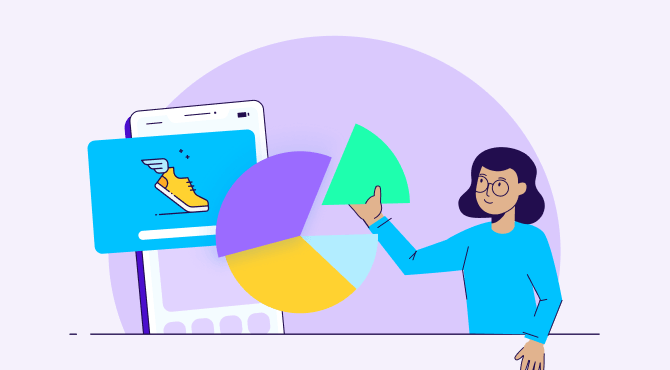
Predictive modeling helps marketers understand consumer behaviors and trends, anticipate future actions, and plan campaigns based on data-driven decisions.
With privacy (or lack of) taking center stage, the average app user is no longer in a hurry to share their data in order to use an app. But, nowadays, are advertisers really left in the dark when it comes to access to quality data?
The short answer is no. By incorporating predictive modeling into their tech stack, marketers can make informed decisions while upholding the strictest user privacy standards.
By leveraging machine learning and AI to examine historical campaign data, past user behavior data, and additional transactional data — predictive analytics are a powerful tool that allow you to make real-time campaign optimization decisions without missing a heartbeat, nip unsuccessful campaigns in the bud, or quickly double down on investments that can drive even better results.
Creating different behavioral characteristic clusters allows your audience to be categorized not by their actual identity, but by their interaction with your funnel in its earliest stages. Offering you their future potential to drive meaningful value to your product.
Even with limited access to granular data, you can leverage predictive analytics to:
- Increase your campaign’s potential audience
- Drive higher LTV
- Ensure more efficient budgeting
Audience segmentation
After gathering data about your users’ pre- and post-install activity, it is important to move from insight to action and prepare specific audience segments that will, first, define your most valuable users and, then, serve as a basis for future acquisition.
Audiences can and should be used for many purposes. For example, as a subscription app, you might:
- Build lookalike audiences. Improve your user acquisition by reaching out to prospects who “look” like your best users – for example, gaming subscribers who completed more than 10 levels in the last 30 days.
- Segment based on exclusion parameters. Remove users that you are reaching out on Network A, and would not like to reach out to on Network B, or create an audience segment of low-value / lapsed users and exclude them from your re-engagement campaigns.
Still not sure? Here are some helpful criteria by which to segment:
| Include | Acquisition | Viewed ad but did not install in the last X days | New User |
| Include | Acquisition | Clicked ad but did not install in the last X days | New User |
| Exclude | Acquisition | Uninstalled the app within 1 day of install | Uninstaller |
| Include | Re-acquisition | Uninstalled the app in the last X days | Lapsed User |
| Include | Re-acquisition | Subscribed > X times AND uninstalled the app in the last Y days | High-Value Lapsed User |
| Include | Re-acquisition | Opted for Payment-Plan-View AND did not subscribe AND uninstalled the app in the last Y days | High-Value Lapsed User |
| Include | Re-acquisition | Subscribed for > X value AND uninstalled the app in the last Y days | High-Value Lapsed User |
User acquisition – 5 best practices for effective UA

1 – Convert trial members to subscribers intelligently
How do you get users who download your app for a trial to convert to a subscription? One strategy is to build content and genre selection into the onboarding flow, immediately after signing up.
When a user is invested in and expresses interest in a genre, that gives you a valuable data point that you can use to engage them with either emails or push notifications.
Also, an untapped strategy in the vertical lies in delivering the call-to-action on the mobile device. For example, if a user signs up on a laptop, you can send them an immediate text to their phone with a link to download the app. The more you incorporate downloading incentives into the sign-up process — the better.
2 – Deploy customer user IDs
Because content in the subscription-based vertical can be delivered to the user via multiple devices and platforms, consenting user IDs can be leveraged to keep a finger on the pulse of what they do, when, and where.
You can then look at acquisition costs holistically, from one device to another, and from one platform to the next.
3 – Measure rich in-app events
Enhance your audience segmentation and downstream analytics with rich in-app events. These can include a host of data points across the signup flow, such as what plan users select (e.g. basic or premium), what bundles they select (e.g. subscriptions that include particular permission add-ons).
After a subscription is completed, you can measure engagement and retention data points — such as visits to specific landing pages with specific content, or minutes of engagement per subscriber.
4 – Use deep links
To put it simply, deep links drive engagement, solidify retention and improve conversion, but you have to test to find out what level of detail (like a certain course or game or content) offers the most bang for your buck.
5 – Make sure your partners can deliver across platforms and devices
One hurdle in cross-platform measurement is making sure your platform partners can work across devices. Some services, for example, only work on mobile, which will inevitably limit your capabilities in case your users use your app on both their mobile phone and smart TV.
If that’s the case with your app, be sure to partner with MMPs that measure across as many platforms as possible.

Chapter 2
Re-engagement
What to measure and set up
As we all know well, having a successful subscription app is not only about acquiring new users and driving them to conversion. It’s also about making sure those who arrive remain engaged over time, ultimately driving revenue, whether that is through lifetime value, upgrades or ads.
Below, we’ve included a table that presents the main metrics top subscription apps include in effective re-engagement via paid (remarketing) and owned (email, push notifications) channels.
You can see that the left column contains vertical-specific goals, while the right one contains the metrics that would drive these goals:
| Goal | KPI |
| Conversion of trial to subscription | • # of subscriptions driven by re-engagement • ROI (for paid remarketing) |
| Subscription renewal | • # of unsubscribers • # of uninstallers • (target for winback campaigns) |
| Content viewed / classes or levels completed | • # of views driven by re-engagement among lapsed users • ROI (for paid remarketing) |
| Transition from freemium to subscription | • # of users driven from trial to subscription via re-engagement • ROAS (for paid remarketing) |
Deep linking and personalization
Earlier, we addressed the why and how of deep linking in acquisition, but in the subscription-based vertical, deep linking is also proving itself to be a highly efficient driver for re-engagement.
For subscription apps that tend to have longer and higher-value conversion cycles, it is easy for a user to become inactive, or even uninstall, when the free trial is over.
Because of that, marketers must be especially proactive and keep users steadily engaged with the latest content after install, rather than face the more difficult task of bringing them back after they’ve already jumped ship.
Advertisers can create audiences of recently non-engaged users. For example, if the user has regularly consumed meditation classes for the last three weeks but hasn’t engaged with the latest one, a push-notification to encourage re-engagement could be all that’s needed.
Marketers need to bring back high-value lapsed users and exclude low-value lapsed users. To ensure success, the flow has to be seamless, especially if there is a drop in engagement among previously engaged viewers, which is where deep linking could work wonders.
Deep linking creates a smooth and seamless customer experience (CX), great CX leads to business results, and the business impact resulting from investment in CX is known as return on experience (ROX).
To learn more about ROX and how it can propel your app engagement forward, have a look at our ROX guide.
Owned media
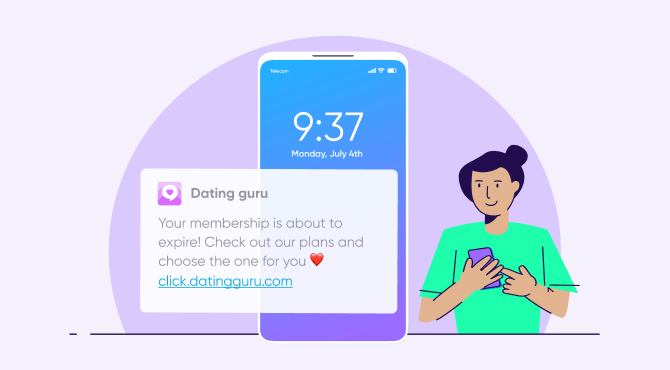
Owned media is any marketing asset that requires little to no additional cost to access and use. Most relevant to mobile re-engagement are push notifications, emails, and SMS, which allow marketers to reach their existing user base beyond in-app notifications and create a more personal connection.
Let’s explore this process. Usually, marketers have a CRM tool that enables the use of such campaigns. These CRM tools receive data in two ways: either through their own SDK, or through an MMP — which typically has pre-built integrations with the most popular tools — allowing them to export their data directly.
Imagine that a gaming user has reached the end of their free 30 days trial, but has yet to sign up for the full paid subscription. Based on these in-app events (which the CRM receives too), the marketer runs both a push and email campaign, but there still is no conversion to level 11 upgrade.
At this point, the marketer would typically start remarketing via paid sources in an attempt to convert the user, ideally — using different parameters to run diverse campaigns on push, email, and paid channels.
For low-value users, personalized push and email (with a relevant deep link in the CTA) makes complete sense because these channels are more or less free. For high-value users, marketers can also re-engage via paid media.
Interestingly, despite their widespread use, many marketers are still not fully aware of the long-term value owned media channels provide.
Why leverage owned media?
- Utilizing the marketing “hierarchy” – Given the little to no cost of owned media channels, especially compared to paid campaigns, re-engaging users via these channels should be the focus and priority whenever possible and appropriate.
- Full control over every aspect of your content.
- It’s free – aside from the internal resources you’ve put in to create it.
- Low risk – with paid media you could find you’ve wasted your budget if a campaign proves to be unsuccessful, and with earned media (the equivalent to digital word of mouth) you lack control over comments or potential inaccuracies. Owned media avoids both pitfalls completely.
- Contextuality – owned media allows you to build content strategy that addresses each stage of your user journey, including your uninstallers or dormant users.
Paid remarketing
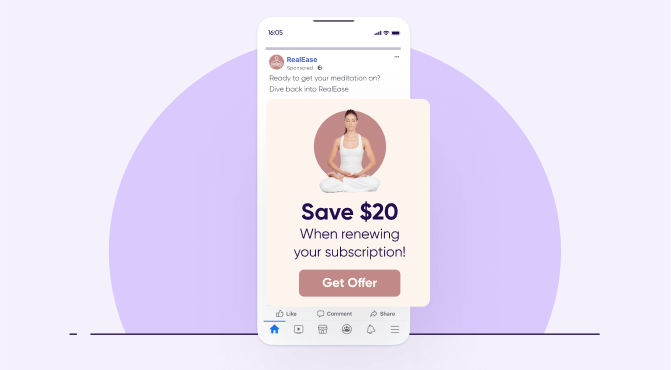
Across most verticals, it’s less expensive to re-engage lapsed or even uninstalled users than it is to acquire new ones. Retention has been a pain point for mobile marketers for years, and UA costs are rising while our data show that every 1 in 2 apps is uninstalled within the 1st month after being downloaded.
Because of that, paid remarketing is still an important part of a mobile marketer’s toolbox.
The ability to re-engage with users who have expressed interest in a subscription — either by visiting the page, registering, or signing up for a free trial — can be highly valuable. Not only is remarketing relatively cost-effective (compared to the much more expensive UA), but the potential value from closing subscriptions is extremely high.
In addition, the fact that remarketing on iOS is difficult with far less user-level data, which is the very basis of making remarketing work, has led to an increase in remarketing activities on Android. As such, there’s no surprise to see Android remarketing conversions more than double YoY.
Timing remarketing campaigns
With subscription-based apps, remarketing can be used to:
- Re-engage users with similar content that they’ve already engaged with (articles from a specific contributor, in the case of a media app).
- Re-engage users who visited the subscription page more than once but did not convert.
- Cross-promote new levels, classes, or subscription plans.
If you do decide to run remarketing campaigns, factors you need to consider include the type of audience segment, the level of engagement, your budget, and whether you’re seeking to recover users or simply retain.
Remarketing campaigns could be launched as early as immediately or 24 hours after install, within the first week, or later. There is no one-size-fits-all formula, so testing is paramount.
Stopping your campaign also depends on several factors, not the least of which are your marketing goals and the limits of your campaign budget.
In the subscription vertical, marketing experts tend to end campaigns after 7, 14, or 30 days, though one perspective suggests that all likely activity will occur within 14 days. So, make sure that, however long you run your campaigns for, you hit the breaks within a reasonable amount of time to avoid wasting budget.
6 best practices for effective re-engagement
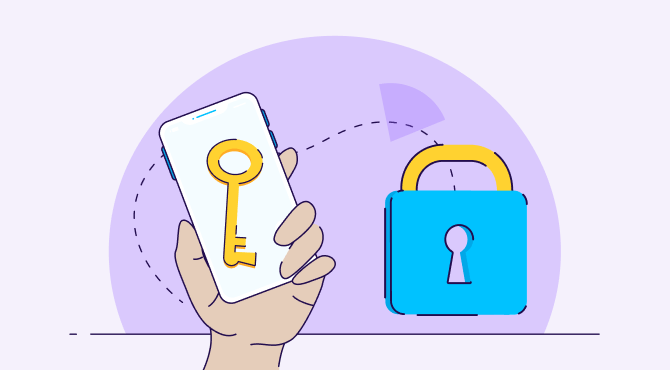
#1 – Personalization – not just for UA
With the sophistication of marketing tech and the number of available apps increasing, app users expect customized experiences from start to finish.
Use viewing histories to re-engage lapsed subscribers. Pair deep links with other in-app event data to reduce uninstall rates. Choose ad partners that offer behavior or intent personalization, and make this process part of your marketing routine.
#2 – Leverage consenting user IDs
User IDs are critical in remarketing, particularly in subscription apps, where users can log-in from multiple devices and platforms. With that data, you can gauge what users are up to in terms of engagement, when and where, and plan effective re-engagement efforts accordingly.
#3 – Leverage owned media
Many of your customers are likely already following your brand or content on social media. Use those channels to drive downloads and installs.
Then, once you have them on mobile, you can reach out and encourage them to convert with personalized content through emails, deep linking, and push notifications.
#4 – Preventative remarketing
Remarketing campaigns should not only prioritize the classic lapsed users, but also function preventatively to keep users engaged before lapsing occurs. When they’re effectively engaged within the first week after install, users are nearly 30% more likely to remain engaged and convert.
That said, be sure to limit preventative remarketing campaigns to engage without overwhelming.
#5 – Incrementality testing
Try to do incrementality testing across every partner and channel.
Every partner you work with will have a different approach to A/B and incrementality testing, which will require you to work with each one individually. So, when you choose your partners, their capacity and approach to incrementality testing should be key to your decision.
#6 – Simultaneous creative testing
When it comes to optimizing ad and creative performance, testing 3-5 different creative sets simultaneously will provide the most profound performance analysis within a reasonable and efficient time period.
However, as a general rule, it’s better to test several different creatives more frequently than to perform tests on large amounts of creative sets at the same time.

Final thoughts
The demand for content is on the constant rise
Consumers are expecting to engage with subscription-based content, anytime & anywhere, which has driven dramatic growth in the past few years, making the vertical more competitive by the day. Therefore, only apps that can regularly offer new quality content can succeed.
Long-term retention is key to success
Keeping users in your app and subscribing to your content is a major challenge, but it is vital for survival, particularly for apps that rely on subscription revenue. Re-engaging users is therefore key, especially via paid remarketing on Android (post-ATT iOS is harder).
Creative is king, as well as the ability to blend in natively
With the current ad space extremely busy, test a diverse range of creative variations and make sure to humanize your brand to stand out above the noise. Creating ads that are highly native to their platforms, can help you increase your CTR significantly.
The bottom line? Deep measurement
Facing this growth, the most crucial takeaway is the importance of granular measurement to carry marketers forward. Follow the suggestions and metrics as detailed above, and you will build the foundation for future profitability, performance, and success.

